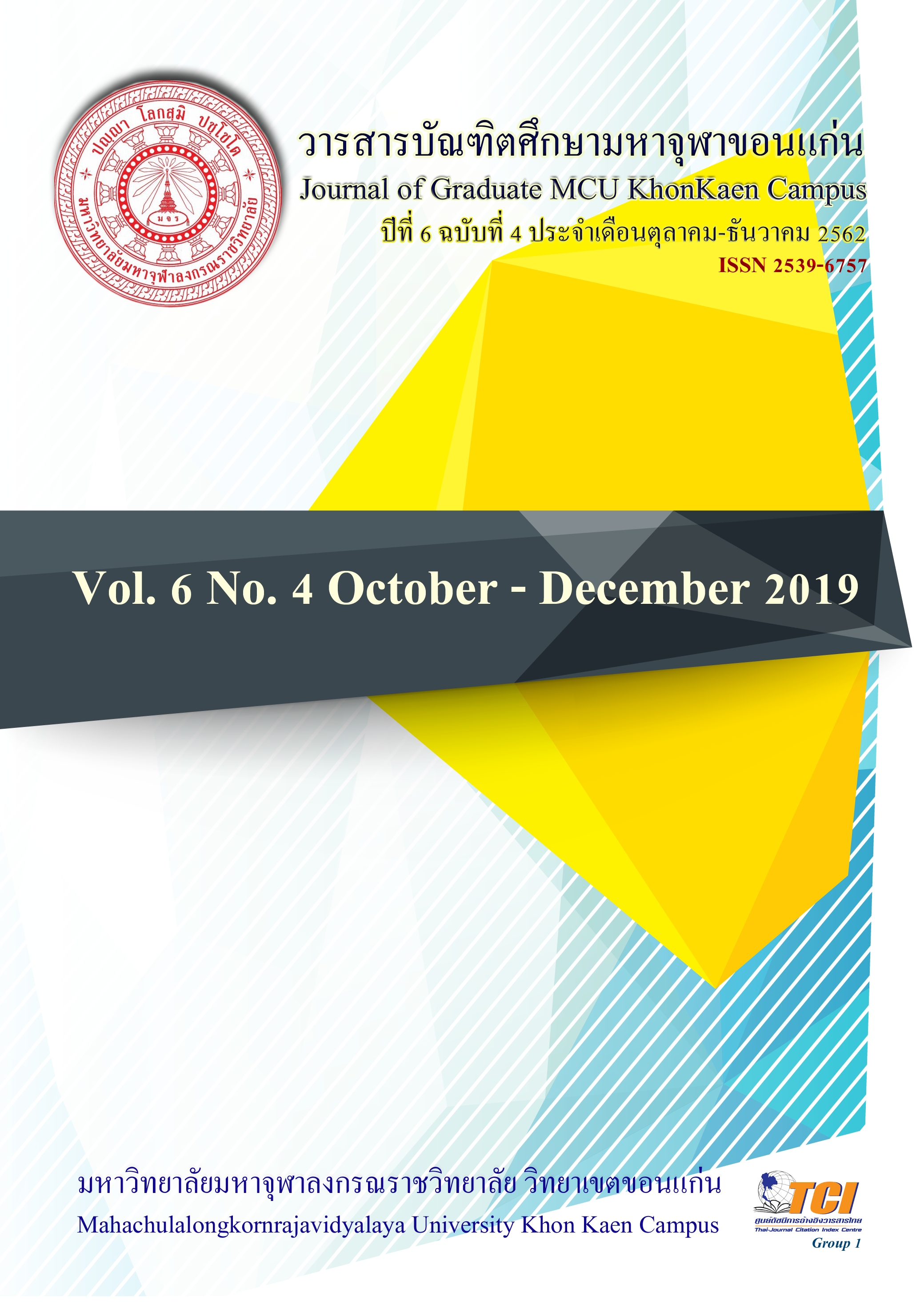A causal Relatoinship Model of Integration Buddhism of Change Leadership in 21st Century in Tourism Authority of Thailand
Main Article Content
Abstract
Objectives of this research were 1) to study the components of Change Leadership in 21st Century of Tourism Authority of Thailand, 2) to study causal factors that together enable to predict the Change Leadership in of Tourism Authority of Thailand in 21st century and 3) to propose a Buddhism integrated causal relationship model of Change Leadership of Tourism Authority of Thailand in 21st century related with the empirical data. Methodology was the mixed methods, conducted by 2 steps: step 1; the quantitative research was used for survey of the validity checking of the model of Buddhism integrated causal relationship model in 21st Century of the Tourism Authority of Thailand and to study the direct, indirect and total effects between the variables in the model. The research was conducted by collecting data from 490 samples analyzing data with descriptive statistics; frequency, percentage, mean, standard deviation (S.D.), Skewness, Kurtosis, Reliability, Confirmatory Factor Analysis (CFA), and Linear Structural Relationship (LISREL). Step 2; the qualitative method was used to collect data by In-dept interviewing 17 key informants and 12 participants in focus group discussion to confirm the model after all data were analyzed. And findings were as follow :
- Change Leadership in 21st century of Tourism Authority of Thailand by overall was at high level (= 3.54, S.D. = 0.688) and each aspect was found that: 1) agreement to change, 2) Ready to be change Leaders, 3) vision, 4) attention to communication, 5) technological minded, 6) having coordination skills, and 7) being moderate, respectively.
- The validity in a causal Relationship Model of Integration Buddhism of Change Leadership in 21st Century in Tourism Authority of Thailand found that analysis had conformed with the empirical data (p-value = 0.051,= 137.56, df.= 112, /df = 1.228, GFI = 0.97, AGFI = 0.95, CFI = 1.00, SRMR = 0.039, RMSEA = 0.022) indicated that (R2) of Structural Equation Modeling in endogenous latent variable was equal to 0.73 meaning that the variables in the model was the organizational environment and external pressure. the finding could explain the variance of practice by Papanikadhamma at 73% and it was found that the variables in the model was the organizational environment, external pressure was equal to 0.66 indicating that the variance of practice by Papanikadhamma could be explained at 66%. Considering, direct and indirect effects between the variables in the model, it was found that the organizational environment and change leadership in 21st century had the Correlation equal to 0.81, direct effect =0.28, indirect effect = 0.54 and total effects = 0.82, The direct, indirect and total effects had affects to the change Leadership in 21st with significantly statistical value at 0.01. Therefore, direct effect and indirect effect between the variables in the model were found that correlation between external pressure and change Leadership in 21st was equal to 0.25, direct effect was equal to-0.08, indirect effect was equal to 0.06 and total effects were equal to -0.02, indicating that direct effect and total effect had no effects on change leadership in 21st with significantly statistical value. Moreover, the variable of practice by Papanikadhamma had direct effect with statistical value at 0.66 with significantly statistical value set at the level of 0.01.
- A causal Relationship Model of Integration Buddhism of Change Leadership in 21st Century in Tourism Authority of Thailand. There are 7 elements which are the desirable qualities of the change leader, consists of 1) agreement to change, 2) Ready to be change Leaders, 3) vision, 4) attention to communication, 5) technological minded, 6) having coordination skills, and 7) being moderate, respectively. In addition, there are external factors that encourage those properties to become more prominent. The organizational climate of 6 aspects consists of 1) standards, 2) commitment, 3) motivation, 4) support, 5) structure and 6) responsibility and By adhering to the principle of Papanikadhamma in 3 aspects as directing or using the principles of the principles of governance consisting of 1) Cakkhuma (Shrewd) 2) Vidhuro (Good Administering) 3) Nissayasampanno (Having Good Credit Rating) which will make a leader with morality and leadership in change management.

